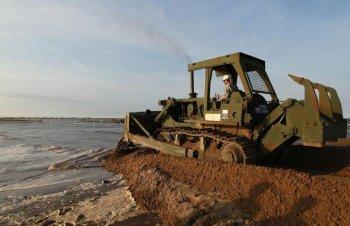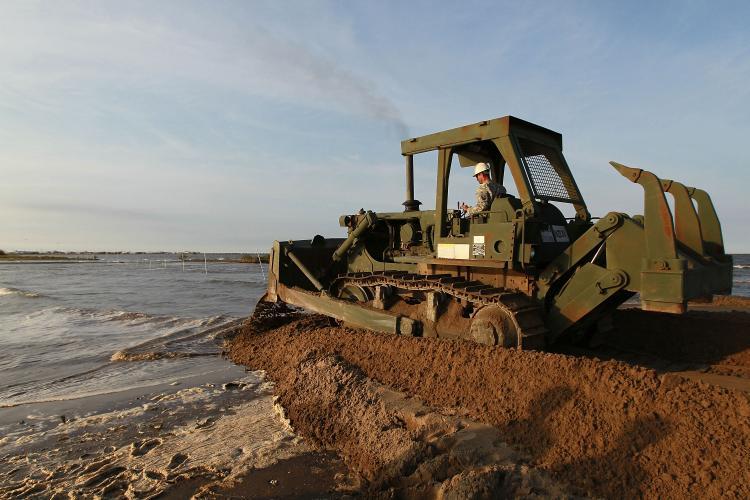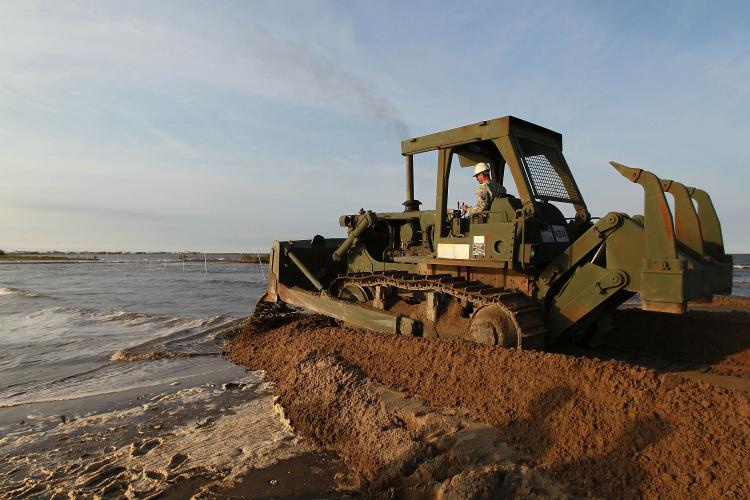Progress with the oil spill in the Gulf of Mexico moves ahead as the Coast Guard and a team of around 10,000 face a race against time.
The specially designed concrete containment box, which was lowered onto the Deepwater Horizon site 1 mile below the surface last Thursday, was not able to perform up to standard because ice-like methane hydrates compromised the efficacy of the dome.
The hydrates, which are formed by the combination of gas and water under a certain pressure and temperature, resulted in a “big technical challenge,” according to Doug Suttles, a BP representative. Hydrates blocked the opening through which the oil was to be sucked up onto an anchored ship for storage.
The 78-ton, 40-by-24-by-14-foot steel vessel now lies at the bottom of the Gulf, next to the pipe leak, according to the National Oceanic and Atmospheric Administration, but because weather conditions are always subject to change, the efficacy of the dome-shaped apparatus will remain uncertain for another couple of days.
“This [containment] dome is no silver bullet to stop the leak,” said Rear Admiral Mary Landry at a press conference this Saturday in Louisiana, but around 10,000 personnel are working on all fronts with the help of government, international, scientific, and industry experts, Landry added.
Environmental advocates urged a speedy cleanup of the oil spill. “The disaster has already taken place. The oil is already in the gulf. Economic and environmental damage has been done. Lives have been lost,” wrote Dan Howells, a campaigner for Greenpeace USA, on his blog.
As Deepwater Horizon rescue efforts increase on a daily basis, they also affect wildlife’s natural habitat. A recent Deepwater Horizon press release stated that the aircraft activity low to the ground will disturb birdlife and may even drive it out.
Breton National Wildlife Refuge closed down last week for wildlife habitat restoration and to repair any damages already made.
“As the level of attention moves towards the shoreline cleanup we are promising transparency and a level of granularity that will allow you to really understand what’s going on out there,” said Landry in her address.
The specially designed concrete containment box, which was lowered onto the Deepwater Horizon site 1 mile below the surface last Thursday, was not able to perform up to standard because ice-like methane hydrates compromised the efficacy of the dome.
The hydrates, which are formed by the combination of gas and water under a certain pressure and temperature, resulted in a “big technical challenge,” according to Doug Suttles, a BP representative. Hydrates blocked the opening through which the oil was to be sucked up onto an anchored ship for storage.
The 78-ton, 40-by-24-by-14-foot steel vessel now lies at the bottom of the Gulf, next to the pipe leak, according to the National Oceanic and Atmospheric Administration, but because weather conditions are always subject to change, the efficacy of the dome-shaped apparatus will remain uncertain for another couple of days.
“This [containment] dome is no silver bullet to stop the leak,” said Rear Admiral Mary Landry at a press conference this Saturday in Louisiana, but around 10,000 personnel are working on all fronts with the help of government, international, scientific, and industry experts, Landry added.
Environmental advocates urged a speedy cleanup of the oil spill. “The disaster has already taken place. The oil is already in the gulf. Economic and environmental damage has been done. Lives have been lost,” wrote Dan Howells, a campaigner for Greenpeace USA, on his blog.
As Deepwater Horizon rescue efforts increase on a daily basis, they also affect wildlife’s natural habitat. A recent Deepwater Horizon press release stated that the aircraft activity low to the ground will disturb birdlife and may even drive it out.
Breton National Wildlife Refuge closed down last week for wildlife habitat restoration and to repair any damages already made.
“As the level of attention moves towards the shoreline cleanup we are promising transparency and a level of granularity that will allow you to really understand what’s going on out there,” said Landry in her address.







